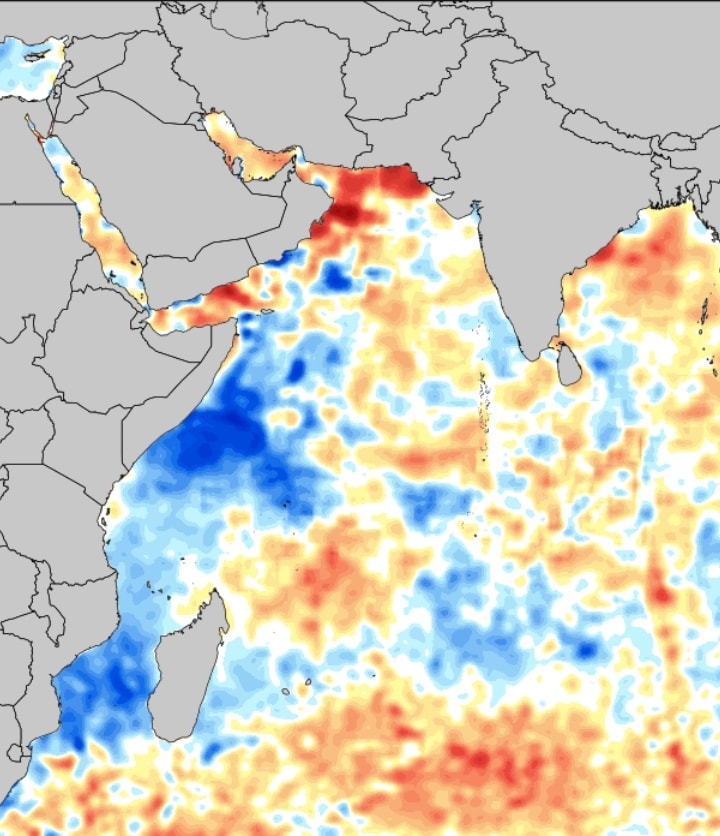For now, the temperature over the Arabian Sea is continuously rising at a rich rate, which is likely to trigger another series of downpours in Karachi.
A picture below shows a high temperature over the Arabian Sea. If the temperature keeps rising like this, it will surely cause heavy rains in a metropolis.

The upcoming series of downpours is like to start from the 29th of August, with full influence.
The ocean influences weather and climate by absorbing solar radiation, distributing heat and moisture around the globe, and thus act as a weather driving agent for the world.
The ocean not only absorbs solar radiation, but it also helps to distribute heat around the globe. When water molecules are heated, they get free and start escaping into the air, a process we all know as evaporation. Ocean water is constantly evaporating due to solar heat energy, increasing the temperature and humidity of the surrounding air to cause rain and storms that are then move towards land, by trade winds (CARRIER WINDS). In fact, almost all rain that falls on land starts off in the ocean. The tropical regions are particularly rainy because heat absorption, and thus ocean evaporation, is highest in this area, causing high humidity in the area.

Ocean currents and trade winds act like a conveyor belt, transporting warm water and precipitation from the equator toward the poles and cold water from the poles back to the tropics. Thus, ocean currents sustain the normal regulation of the global climate, and climate change leads to serious abnormalities in this water cycle, helping to counteract the uneven distribution of solar radiation reaching Earth’s surface. Without currents in the ocean, regional temperatures would be more extreme, super hot at the equator and frigid toward the poles, and much less of Earth’s land would be habitable.


























Leave a Reply